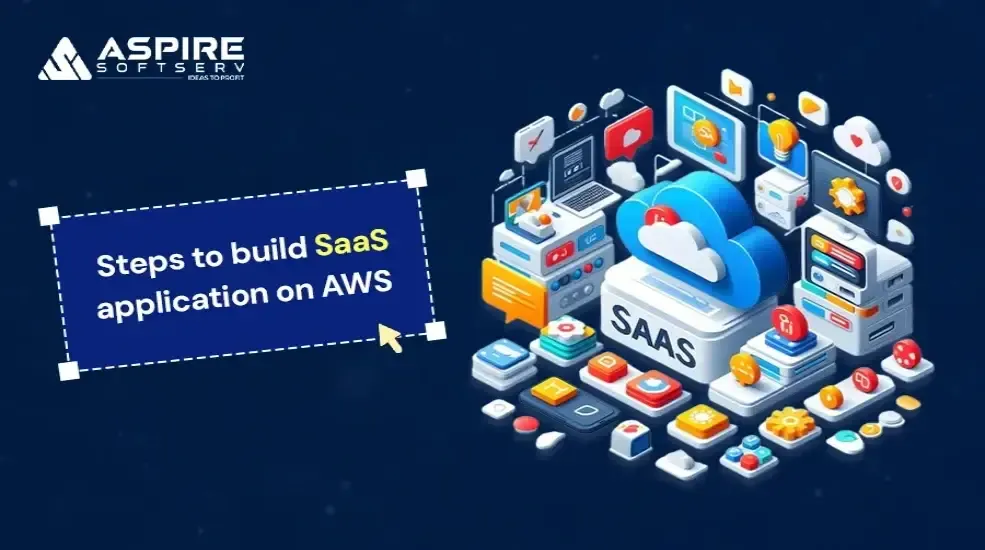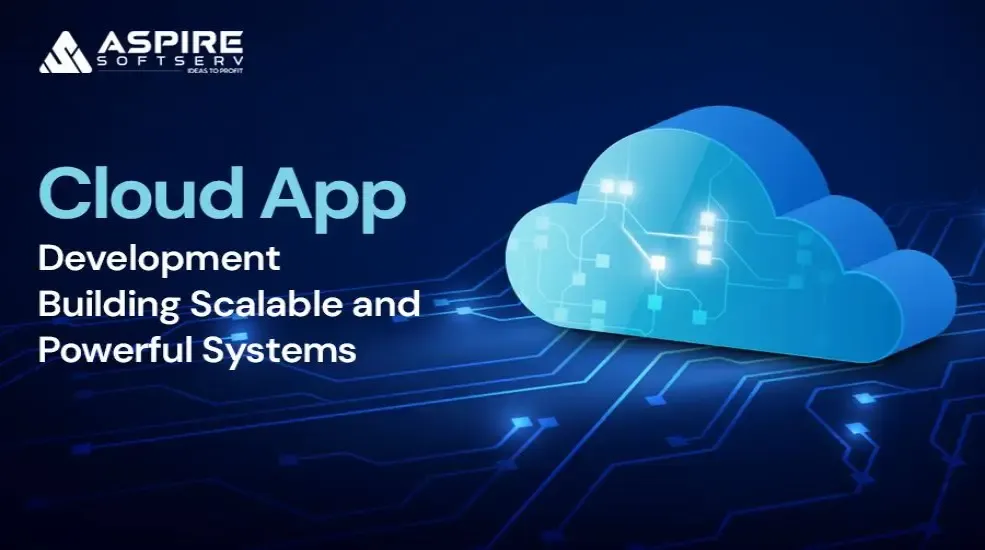
Cloud computing has revolutionised the way applications are developed, deployed, and maintained. With the rise of powerful cloud services from companies like Amazon Web Services (AWS), Microsoft Azure, and Google Cloud Platform (GCP), developers can build scalable, reliable, and cost-effective applications. Costs are faster and more efficient than ever before...
In this article, we will explore the important aspects of cloud app development. It focuses on the steps to building a scalable system. Challenges developers can face and how to overcome them We will also look at the future of cloud app development. Includes real-world examples of successful applications built using cloud technology.
Choosing the right cloud strategy for your app
The first and most important decision in cloud application development is choosing the right cloud strategy. Depends on app size Security needs and budget Different strategies will suit different needs.
1. Public Cloud:
This is the most common option for cloud development. In the public cloud, services such as AWS, Azure, and GCP manage every aspect of the infrastructure. Public cloud is often the best option for businesses that want a flexible, cost-effective solution without the need to manage infrastructure.
2. Private Cloud:
On the contrary Private clouds are hosted within the organization's own data centers. This option is often chosen for applications that require a high level of security or must comply with specific regulations.
3. Hybrid Cloud:
A hybrid cloud approach combines public and private clouds. Helping various organizations Enjoy the scalability and flexibility of public clouds. While maintaining sensitive information of their private infrastructure
4. Multi-Cloud:
This strategy uses more than one cloud provider. It can help businesses avoid vendor lock-in. Improve redundancy and provides better disaster recovery protection.
The right cloud strategy depends on a number of factors. This includes application-specific needs, budget, security concerns. and compliance requirements
The role of microservices in cloud app development
Microservice architecture is becoming an increasingly popular approach. in cloud app development Instead of building monolithic monolithic applications Developers divide their apps into smaller, independent services. Each service will perform specific tasks. These microservices communicate with each other through APIs.
Microservices have many benefits such as:
Improved scalability:
Individual microservices can scale independently. So you just need to allocate resources to the parts of your application that need more capacity…
Increased agility:
Because each microservice is independent Individual components can then be updated or changed without affecting the entire application.
Better Fault Isolation:
If one of the microservices fails The remaining applications will be able to continue working. This helps prevent downtime.
Technological transformation:
Different teams can use different technologies to develop personalized services based on their specific needs.
Using microservices ensures that cloud applications can evolve quickly and remain agile in the face of changing user needs.
Key challenges in cloud development and how to solve them
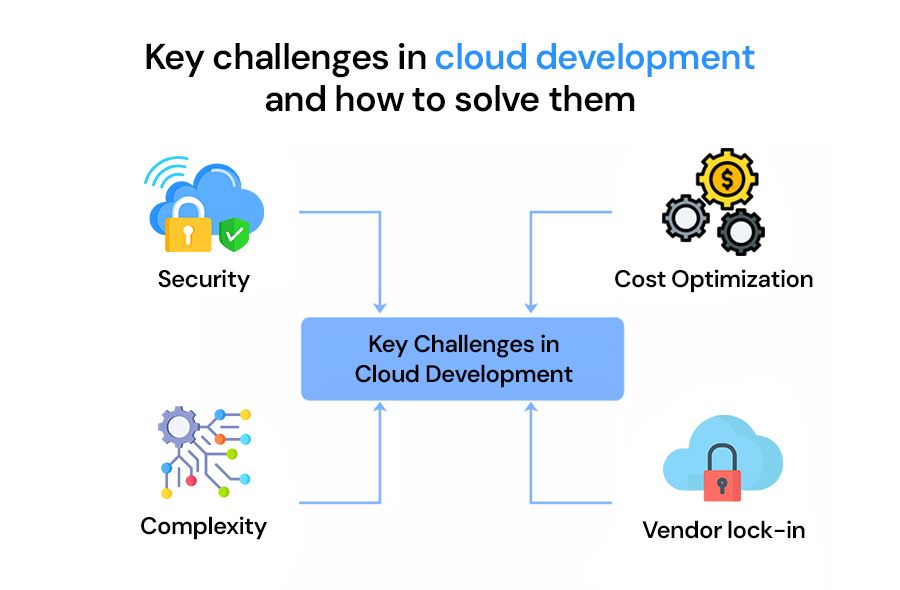
Although cloud-native app development offers many benefits, But it has its own challenges. Some of the main challenges and solutions include:
Security:
Protecting applications and data from cyber threats is important. Implementing strict security measures such as data encryption, secure APIs, and access controls. and regular safety inspections Can help reduce risk
Cost Optimisation:
Cloud services can be expensive if not managed properly. Developers should monitor usage. Choose the right cloud service and use cost optimization tools that adjust resources according to demand Sizing properly and using Reserved Instances can help control costs.
Vendor lock-in:
Using a single cloud provider can be risky and lead to vendor lock-in. To reduce this risk Companies can opt for a multi-cloud strategy that uses the services of multiple cloud providers.
Complexity:
Managing and maintaining cloud infrastructure can be complex. Tools such as Infrastructure as Code (IaC) and container technologies (such as Docker and Kubernetes) are making infrastructure management easier. Makes it easier for developers to manage and automate cloud resources...
How to optimize cloud spend without cutting corners
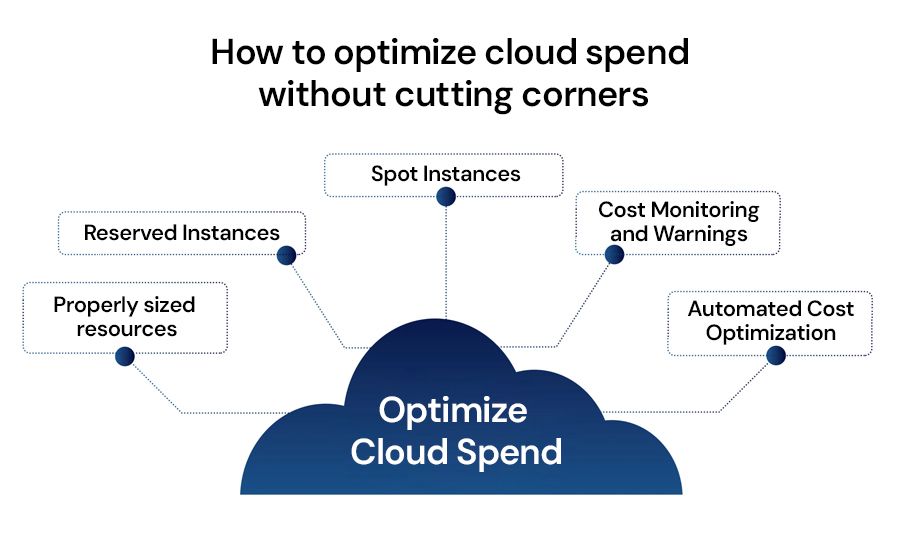
Cost optimisation is critical for cloud businesses. Some strategies for optimizing your cloud spend include:
Properly sized resources:
Make sure your application uses only the resources it needs. Over-allocation can lead to unnecessary costs. Regularly analyze resource usage for optimal scaling.
Reserved Instances:
Cloud providers offer significant discounts on resources when you commit to using them for a long period of time. Reserved Instances are often cheaper than pay-as-you-go prices.
Spot Instances:
Spot instances are unused cloud resources that are available at a discounted price. There are some risks, though. It's not a cost-effective (since the cloud provider can bring it back at any time) but it's also a cost-effective way to scale applications.
Cost Monitoring and Warnings:
Regularly review cloud usage. and set alerts for unexpectedly increased usage. This helps you avoid any unpleasant surprises at the end of the month.
Automated Cost Optimisation:
Many cloud providers offer automated tools that help identify and fix cost inefficiencies. These tools can be used to greatly improve cost management without the need for frequent manual audits.
Impact of AI and automation on cloud apps
Artificial intelligence (AI) and automation are increasingly being integrated into cloud app development. To improve scalability, security, and overall performance, here are some ways AI and automation are transforming cloud apps:
Automatic Provisioning and Scaling:
AI-powered tools can automatically provision resources based on user needs and scale the application. This reduces the need for manual intervention...
Advanced Security:
AI can help detect and respond to security threats in real time. Provides better protection for cloud applications
Improve performance:
AI can analyse performance data to identify potential issues and bottlenecks. It provides insights in cases where adjustments need to be made.
Streamlined operations:
Cloud operations can be automated. Helps reduce time spent on routine maintenance work This allows developers to focus more on innovation and application growth.
Real-World Case Studies: Advanced Cloud Apps in Action
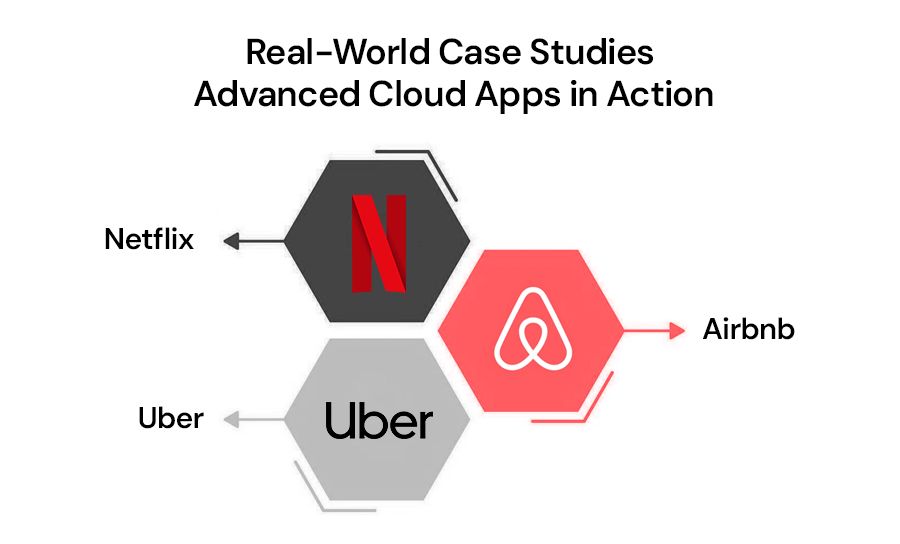
Several companies are already using cloud technologies to build groundbreaking applications. Some examples include:
Netflix:
Netflix utilizes AWS to deliver high-quality video streaming to millions of users worldwide. The platform handles massive amounts of data and traffic, showcasing the power of cloud infrastructure.
Uber:
Uber uses cloud computing to manage its vast network of drivers and riders in real-time, ensuring that the app remains reliable even during periods of high demand.
Airbnb:
Airbnb relies on the cloud to power its global platform, connecting travelers with unique accommodations around the world.
The Future of Cloud Application Development
The future of cloud app development is exciting, with new technologies and innovations emerging all the time. Key developments to watch for include:
Edge Computing: Edge computing brings computation and data storage closer to the source of data, reducing latency and improving real-time processing.
Serverless Computing: Serverless computing will continue to gain traction, offering developers greater flexibility and scalability in building cloud apps.
AI and Machine Learning (ML): AI and ML will increasingly play a role in optimizing cloud app development, helping to build smarter, more responsive applications.
Building for Scalability: Best Practices for Improving Your Apps
It is important to build scalable cloud applications to support increasing traffic and user demands. Here are some best practices for building scalable cloud applications.
1. Designing for horizontal scalability:
Horizontal scaling involves adding more instances of your application rather than increasing the size of the instances. This approach is highly scalable and cost-effective.
2. Serverless Computing:
Serverless computing allows developers to run code without worrying about server management. It automatically resizes as needed. This makes it suitable for growing applications.
3. Use an archiving strategy:
By archiving frequently accessed data. You can reduce the load on cloud resources and improve the performance of your applications.
4. Use Load Balancing:
Load balancing helps distribute traffic evenly across multiple instances of the application. This ensures maximum efficiency and prevents bottlenecks.
Cloud-native vs. Cloud-enabled applications: What's the difference?
When it comes to cloud app development There are two main approaches: cloud-native and cloud-native.
Cloud-native applications:
These applications are specifically designed to take full advantage of the cloud environment. They leverage cloud native technologies such as containers, microservices. and serverless computing Cloud-native applications are highly scalable and flexible.
Cloud-enabled applications:
These are legacy applications that have been moved to the cloud. Even though they benefit from cloud infrastructure But it is not optimized for cloud environments. and may not have the same scalability and flexibility as cloud-based applications…
Steps to building future-ready cloud apps
Follow these steps to create future-ready cloud applications:
Choose the right cloud strategy: Choose a cloud strategy that suits your specific needs and requirements.
Adopt a microservices architecture: Divide your application into small, independent services to increase scalability and agility.
Embrace cloud-native technology: Use technologies like containers. Serverless Computing and Kubernetes to Optimize for the Cloud
Prioritize security: Use strict security measures to protect your apps and data.
Optimize costs: Regularly review and optimize cloud spend to ensure efficiency.
Built for scalability: Make sure your app can easily scale as demand grows.
Stay informed: Follow emerging cloud technologies to stay ahead.
Conclusion
Cloud computing has transformed application development and deployment. When using cloud services Developers can create scalable applications. effective and cost effective with speed and agility Following the best practices listed in this article will help you navigate the complexities of cloud app development. This ensures your application is future-ready.
Start Your Cloud Journey Today!



